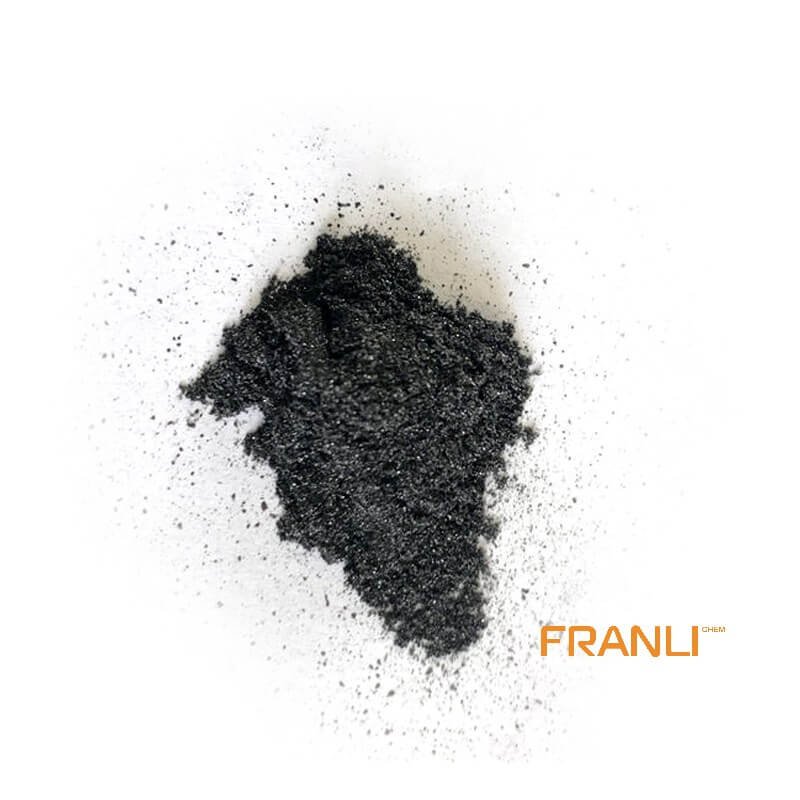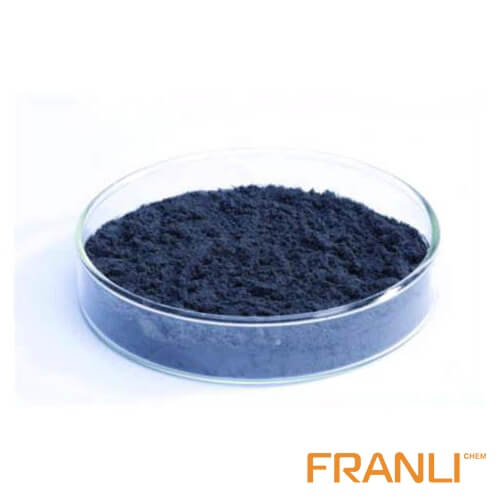


Expandable Graphite
Size
0.50mm or 0.106mm, etc
Package
25 kg small bags into ton bags
Origin
China
Features
Preservative/Electrical and thermal conductivity, etc.
Application
Fireproof sealing element, flame retardant, refractory brick, etc.
Expandable graphite crystal is a typical layered carbon material. Other heterogeneous particles such as atoms, molecules, ions, and even atomic clusters are inserted into the interlayer of crystalline graphite by physical or chemical methods to form a new layered compound, which is called graphite interlayer compound, namely expandable graphite.
Request a quote
Expandable graphite has proved to be very practical in life, and it is also a very effective product.
Expandable graphite is expanded into expanded graphite by heating at a high temperature. In addition to the excellent properties of ordinary graphite, such as high-temperature resistance, electrical and thermal conductivity, lubricity, plasticity, and thermal shock resistance, expanded graphite also has some characteristics obviously different from ordinary graphite
(1) The expanded graphite is soft, light, porous, and has good adsorption properties. Due to its well-developed pores and mainly medium and large pores, it is easy to adsorb macromolecules, especially non-polar macromolecules.
(2) High thermal conductivity, tens to hundreds of times higher than that of the traditional asbestos gasket.
(3) It has good radiation protection performance. It can withstand neutron, P, y, and other radioactive rays
After long-term irradiation, the properties and shape of the material have no obvious change.
(4) Good self-lubrication and soft texture. In practical use, the shaft and sleeve wear very little, can be used in high-speed equipment, the allowable linear speed can reach 4 OM / s, more than five times higher than asbestos packing.
(5) Good sealing effect, flexibility and elasticity, and good impermeability. Therefore, graphite products made of expanded graphite can be widely used in steel, metallurgy, petroleum, chemical machinery, aerospace, atomic energy, and other industrial sectors.

Sealing material
Asbestos and rubber products have been widely used in the past. The incidence rate of lung cancer is higher than that of the normal population. In addition, asbestos will gradually dehydrate and pulverize at high temperatures, and seal failure will occur when water is encountered. Therefore, the use of asbestos products is prohibited in many developed countries. However, the rubber products have poor temperature resistance and have a reaction to some solvents, and their application is limited. Expanded graphite has a large specific surface area and high surface activity, so it can be pressed and formed without any binder or sintering. Graphite paper, called flexible graphite, is made by molding or rolling. It is a very excellent sealing material, which can resist high temperature and corrosion, and can be used in high-temperature tank sealing in the chemical industry, petroleum industry, and electric power industry, and is known as the world’s “king of sealing”. Compared with traditional sealing materials (such as asbestos, rubber, cellulose, and composite materials), the flexible graphite has a wide range of available temperatures, and can be used in the air from 200 ℃ -450 ℃, and can reach 3000 ℃ in vacuum or reduction atmosphere, and the coefficient of thermal expansion is small, and it does not brittle or crack at low temperature; It is not softened and creep at high temperature, so it has been widely used in petrochemical, mechanical, metallurgy, atomic energy, and other industries.
Environmental protection
Expanded graphite has a large volume of voids, multi-level and rich microporous structure, so it has a strong adsorption performance. It can be widely used in environmental protection engineering for adsorption and separation of oil and organic macromolecules from water. The pore structure of expanded graphite can be divided into the open pore and closed pore, and the pore volume accounts for about 98%. Because it is mainly macroporous and mesoporous, it is different from activated carbon, molecular sieve, and other microporous materials in adsorption characteristics, especially suitable for liquid-phase adsorption.
In liquid-phase adsorption, it is lipophilic and hydrophobic, and can selectively remove non-aqueous solvents in water. After absorbing a large amount of oil, it can be lumped and floated on the liquid surface, which is convenient for collection. For example, the floating oil can be removed from the sea, rivers, and lakes, 1g expanded graphite can absorb more than 80g heavy oil, and 80% or 50% – 70% heavy oil can be recovered from the expanded graphite adsorbed heavy oil or crude oil, so it can be regenerated and recycled. As expanded graphite is basically composed of pure carbon, non-toxic, and chemically inert, it will not cause secondary pollution in water.
It is a promising environmental protection material to remove oil pollution on water surfaces. In addition to the selective adsorption in the liquid phase, expanded graphite also has a certain removal effect on the main components of air pollution such as so x, and not produced by industrial exhaust and automobile exhaust, and the adsorption effect is more significant at high temperature. At low temperature (room temperature), the adsorption of so x on expanded graphite is mainly physical adsorption. At this time, the van der Waals force between graphite surface and so x produces adsorption. The adsorption capacity increases with time and tends to saturation adsorption value; At high temperature (500 ℃), expanded graphite: with the increase of electron energy, chemisorption is greatly increased, so chemisorption is the main adsorption at high temperature, and the adsorption capacity is greatly increased compared with that at low temperature. So x is the main component of flue gas in coal combustion. It is of great significance to use expanded graphite to adsorb so x to solve the increasingly serious air pollution problem.

Medical field
Carbon graphite materials have high strength, are lightweight, anti-friction, anti-fatigue, are non-toxic, tasteless, and have no side effects. The material properties can be adjusted through structural design to meet the specific mechanical requirements of artificial prosthesis materials. It is a very important biomedical material and has good application potential in the medical field, such as adsorption of digestive tract bacterial toxins with biochar, Activated carbon fiber is used as adsorbent for artificial kidney and liver, biological fixation enzyme, bandage and sterilization medical and health products.
Carbon artificial heart valves and carbon artificial legs have been successfully used in clinics. Carbon materials for middle ear repair, artificial tooth root, and joint replacement have been successfully tested. Carbon plates, bone splints, and bone needles have been reported. Bone and joint are the main organs of the human body to bear the load. Whether it is defect repair material or external bone, it should have high strength. At present, metal alloy is the main external fixation material, followed by polymer materials.
The metal alloy has high strength and good toughness, but it is difficult to operate because of its high specific gravity and poor X-ray transmittance; Polymer materials have low strength, insufficient rigidity, and high price. Due to its excellent biological mechanical properties and biocompatibility, carbon graphite material can be used not only as a defect repair material but also as external bone fixation device material, which has a good application prospect in the medical field. Expanded graphite materials also have wide application prospects in medical dressings. As a medical dressing, it can promote the healing of burns and other diseases, and its adsorption capacity on the wound surface is 3-5 times higher than that of gauze. The animal experiment proved that there were no acute and chronic toxic side effects, no distortion and carcinogenesis, and no staining of the wound surface. The results showed that the drainage effect of gauze was better than that of traditional gauze, and it had obvious anti-infection, antibacterial, and anti-inflammatory effects, which could replace 50% – 80% of traditional gauze.
Expandable graphite has proven to be a very effective product. It has good performance and high market value.



